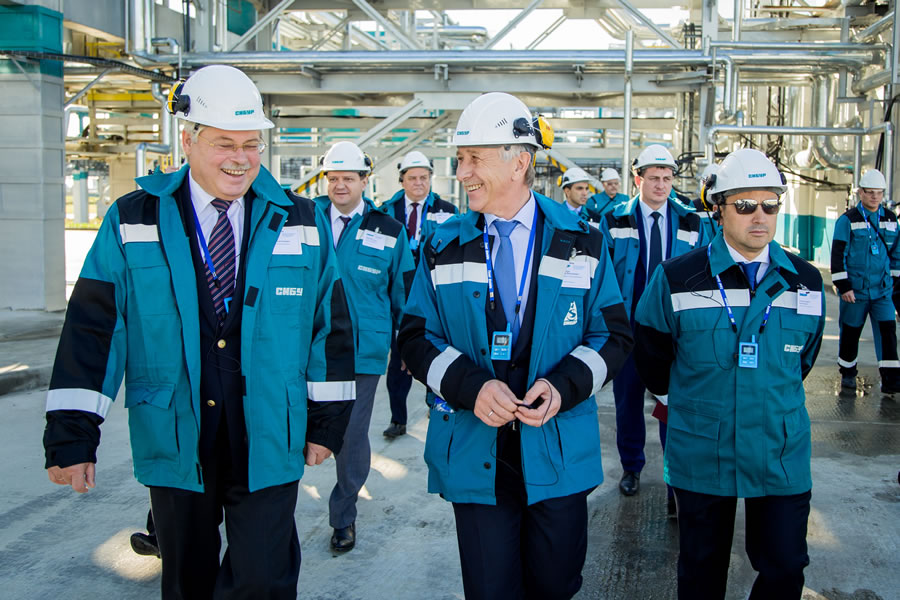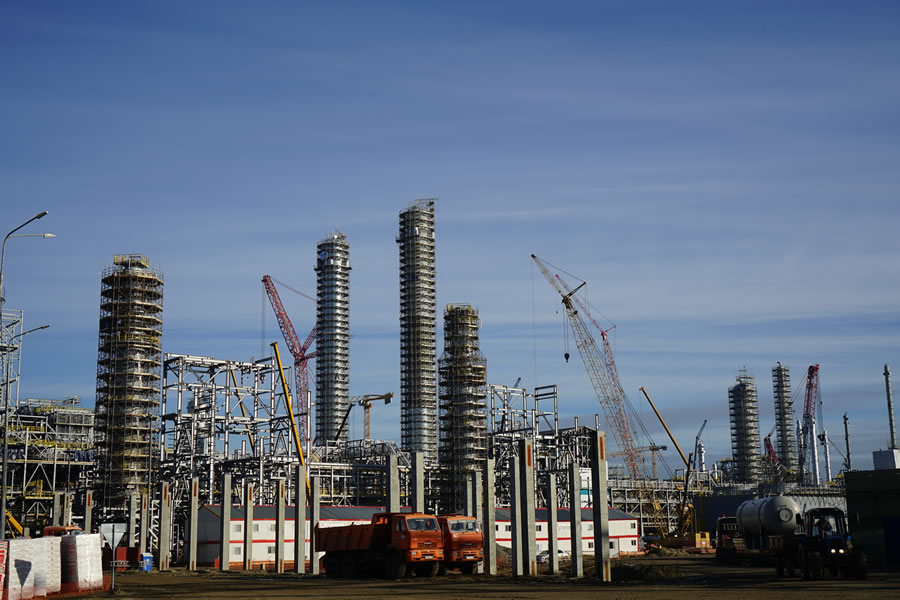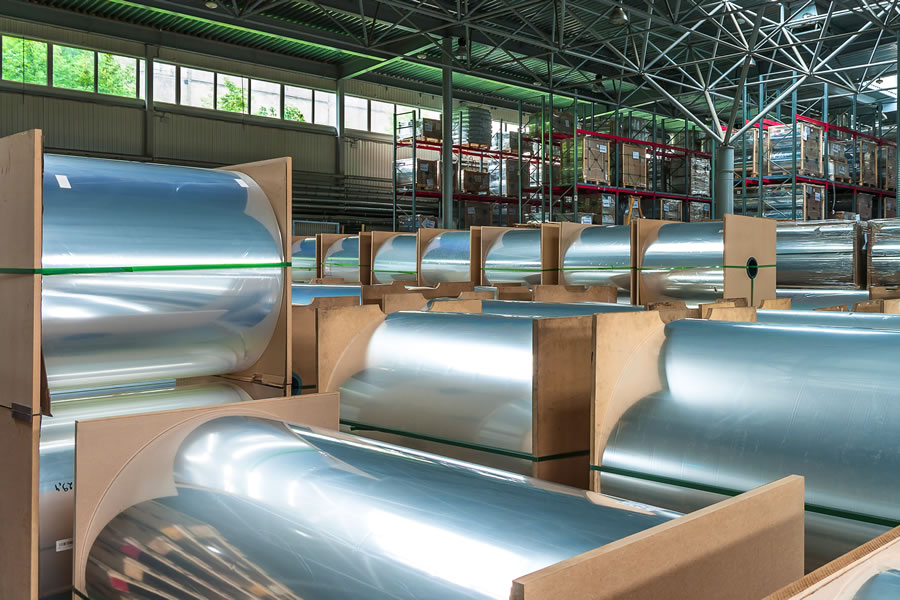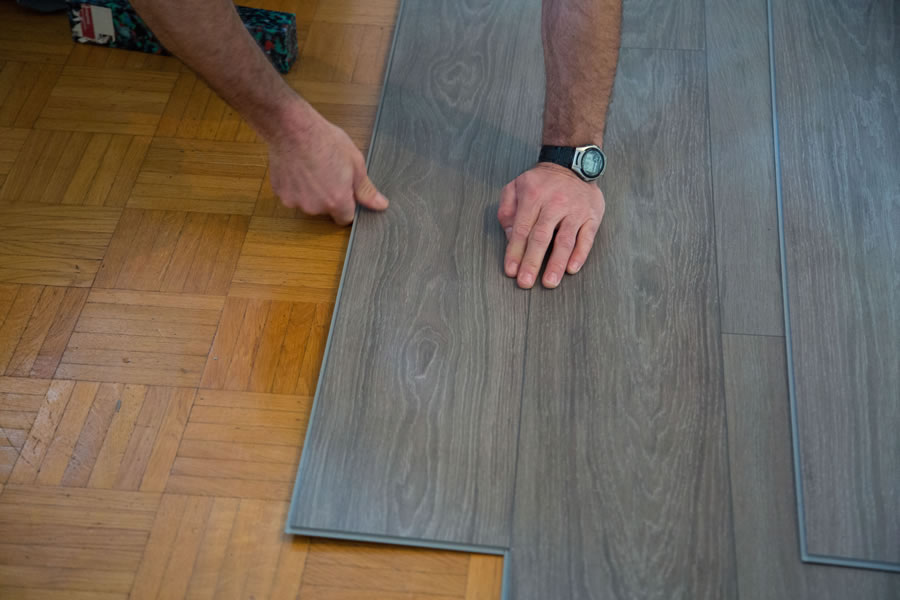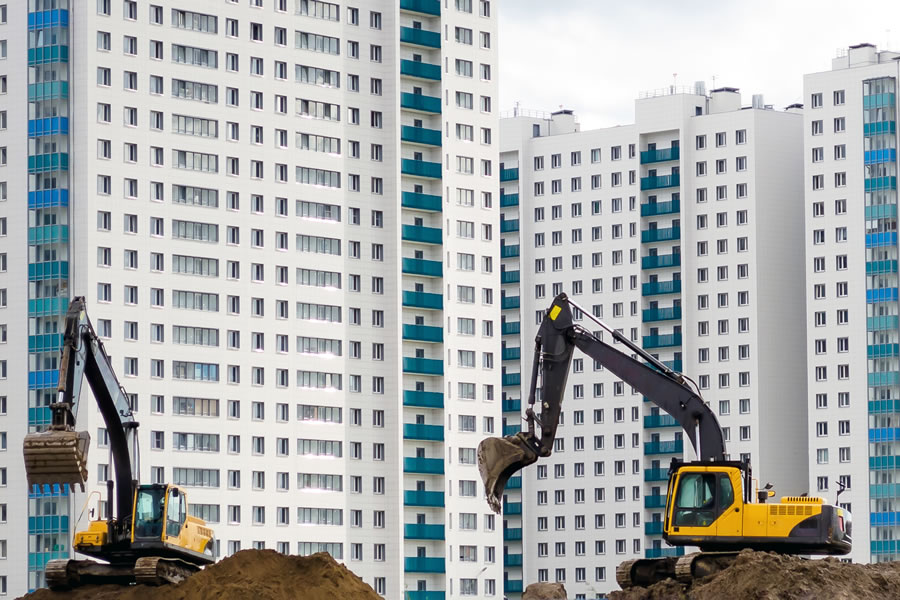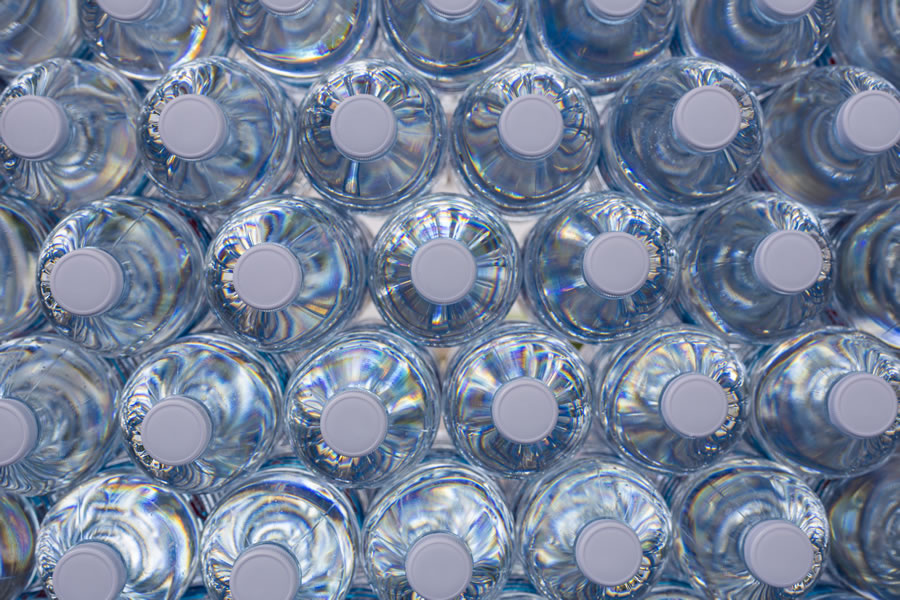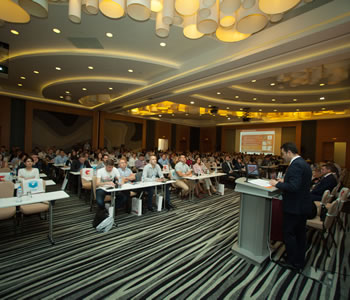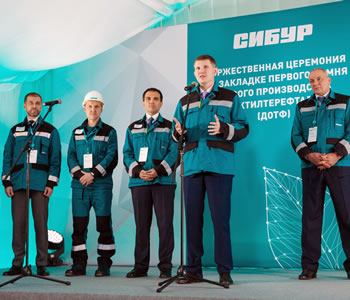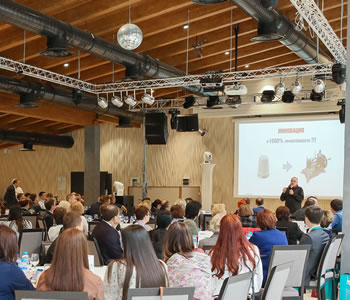According to the Federal State Statistics Service (Rosstat), the processing volumes grew a mere 1% year-on-year in January–September, while the output of plastics in primary forms added 3.4%.
However, performance differs fr om segment to segment. Some segments still have upside potential, while others seem to be exhausting their growth opportunities, at least in the short term.
Polyethylene and polypropylene pending the launch of ZapSibNeftekhim
In recent years, the output of polyethylene and polypropylene, the two basic polymers, has been demonstrating steady growth. There were several factors behind this strong performance, including the launch of new capacities at SIBUR's Tobolsk site (SIBUR Tobolsk), an upgrade of existing facilities at the Tomsk site (Tomskneftekhim), and a strong demand coming on the back of the packaging industry's active development and emerging recovery in other sectors, such as automotive industry. Last but not least, producers used the recent rouble devaluation to actively substitute imports and grow their exports.
Opening of a modernized complex for the production of polypropylene and polyethylene at the Tomsk site of SIBUR.
However, the market has almost reached the boiling point. The capacity utilisation rate today is approximately 95%, which is very close to the maximum. This might be a trouble in the making, as disruptions at a single facility may have a trickle-down effect and adversely impact the entire sector. “The suspension of operations at Angarsk Polymer Plant led to shortages in 2017 that drove up the prices for low-density polyethylene (LDPE) [largest segment in the polyethylene market]. The market was sensitive to those fluctuations, as prior to the breakdown the prices had been on the downward path,” says Andrey Kostin, Head of RUPEC, noting that no major changes are envisaged until SIBUR commissions its ZapSibNeftekhim.
The constraction of ZapSibNeftekhim is expected to cover its domestic production in Russia by several types of products.
In 2016, polyethylene output added 7% year-on-year to reach 1.7 mt, while in 10M 2017, according to Market Report, it grew 8% to 1.4 mt, with high-density polyethylene (HDPE) and linear polyethylene output increasing by 14% and an impressive 46%, respectively.
In 2016, polypropylene output stood at 1.38 mt (up 8% year-on-year). For 10M 2017, it was 1.16 mt (up 2%), according to Market Report. SIBUR’s Tobolsk and Tomsk sites were the output growth leaders.
In this environment, consumers focus on strengthening ties with suppliers, while producers seek to create additional opportunities for generating profit by promoting higher-margin products. An example is polypropylene copolymers (used in pipe production, etc.). “Currently, Russian consmers have to purchase significant volumes of them abroad. But thanks to things such as refocusing some Nizhnekamskneftekhim capacities to produce copolymers, the situation is gradually changing. However, it is only the launch of ZapSibNeftekhim that will completely settle the issue, with polypropylene copolymers among its products,” says Tamara Khazova, Head of Analytics at Alliance-Analytics.
For linear polyethylene (LPE), a material with excellent consumer properties (glossy surface and resistance to piercing) and advanced sustainability features (lower film thickness without compromising the quality), it happens to be almost the same. While the global demand is steadily growing, Russia is expected to cover its domestic production deficit only after ZapSibNeftekhim is put into operation.
BOPP films – playing by consumer rules
Today, BOPP film production attracts significant investment, which leads to increased capacities at existing plants and emergence of new businesses, notes Andrey Kostin. The feedstock base can support the changes due to solid growth of domestic polypropylene output. But the major driver here is increasing demand for end products.
The key BOPP film consumers are food manufacturers, considered to take the most advantage of the import substitution policy not only by experts but also by the government. In 2016, Russian food manufacturing grew 3.1%. And that was fr om a high base created in 2014–2015 following the introduction of food counter-sanctions that effectively removed some of the European imports from the market. In 9M 2017, the food industry added another 5%, according to Rosstat. All that has naturally led to a stronger demand for polymer packaging and BOPP films in particular. “Since households continue to increase their food spending, we can expect BOPP films to be in positive territory next year. And with the food market still far from having fully embraced the polymer packaging, there are plenty of niches left wh ere it has yet to see extensive use,” says Andrey Kostin, pointing to the latter as another potential driver.
The demand for BOPP film has significantly strengthened for several years.
In the full year of 2017, Russian BOPP film output is expected to reach 197 kt (up 8.2% year-on-year), with consumption to come at 154 kt (up 2%). Russian products enjoy high demand not only in the domestic market but abroad as well.
That is in line with evolving customer preferences. According to Mintel, producers increasingly use packaging to build and support their brand identities. On the other hand, it is not only visual appeal that end consumers value – the products must be well-preserved too. Customisation, or making a product to a certain consumer group’s requirements, is also increasingly important.
Polyvinyl chloride – explosive growth
“The full year of 2017 will show explosive growth in PVC output,” assures Tamara Khazova. Last year, Sayanskchemplast, one of the key PVC producers in Russia, had to halt operations following a feedstock supply disruption. The shortage was eventually compensated by imports, which accounted for as much as 35% of PVC consumption in some months. Other major suppliers such as RusVinyl, a joint venture between SIBUR and Belgium's Solvay, and Bashkir Soda Company also increased their output. In 2017, Sayanskchemplast recovered, and RusVinyl continued growing. According to Tamara Khazova, this helped squeeze the excess imports out of the market.
It is predominantly true for the suspension PVC (S-PVC), which is used in the most mass segments. Meanwhile, the emulsion PVC (E-PVC), which is used in floor coverings, is still a segment characterised by heavy reliance on international supplies (up to 80%), as there is only one local producer in Russia – and that is RusVinyl. In the full year of 2017, experts expect E-PVC consumption to rise, while the demand for S-PVC should see but minor changes. As a result, Russian companies are also actively exporting their products, says Guenther Nadolny, RusVinyl CEO, citing India, Belarus, Ukraine and Serbia among the destinations.
PVC (E-PVC), which is used in floor coverings, is produced by only RusVinyl in Russia.
In 2016, Russian PVC output remained virtually unchanged versus 2015 at 785 kt. In 10M 2017 alone, the country's PVC universe boasted output of 735.4 kt, according to Market Report. RusVinyl produced 254.4 kt of resins, up 4% year-on-year.
PVC is extensively used in construction as a component of window profiles and various finishing materials. Thus, further developments will be defined by the recovery of the Russian construction sector, experts assume. The onset of the crisis saw the completed works volume plummeting and new projects being suspended. In 2017, the situation was still far from perfect, although first positive signals did appear. For example, a significant reduction in housing development forecasted by the Ministry of Construction has not fully emerged as yet, with 10M 2017 generating only a 4.3% decline. In December, the number of completed projects is traditionally high, so we may expect the year-on-year gap to minimise (against 80.2 million sq m of housing built in 2016). The government’s forward-looking plans are ambitious. According to Mikhail Men, Minister of Construction, the growth should start as soon as in 2018. “Our goal is to gradually move towards 120 million sq m [of housing], reaching this target by 2025,” he said previously. Expansion in the construction sector will be accompanied by growth in PVC products consumption, especially as regards floor and wall coverings, anticipates Tamara Khazova. “As a result, we expect the demand to grow by 3–4% as soon as in 2018. And Russian producers will be growing along with the market,” she insists.
Expandable polystyrene: hoping for the best
The construction market developments affect even more another polymer product, expandable polystyrene, which is widely used for thermal insulation. In 2017, there was a downward trend with declining consumption. According to Andrey Kostin, this was not only caused by a reduced number of construction projects, but also the developers’ cutting costs by using the cheapest materials, even at the expense of quality.
Due to changes in the number of projects in construction consumption of expandable polystyrene has steadily decreased.
Despite the shrinking consumption, Russian production of expandable polystyrene keeps growing. The forecast for 2017 is 119 kt. This is up 2.6% vs 2016 and almost flat vs 2015.
On the other hand, the negative dynamics has been observed for several years already and consumption is shrinking at a slower rate. For example, in 2015, consumption was 121.7 kt, and in 2016 – 109 kt (down 10.4% year-on-year). The forecast for 2017 is 106 kt (down 2.7% year-on-year). At the same time, manufacturers are even ramping up output, phasing out imported products (the share of imported products went down to 19%) and trying to enter foreign markets. “This material’s exports to the CIS are growing,” said Andrey Kostin.
Polyethylene terephthalate: against all restrictions
The situation in the PET market is nothing short of surprising. On the one hand, it perfectly illustrates the import substitution trend: even before the crisis, PET production capacities could steal competitive advantage from foreign suppliers. On the other hand, the state-imposed restrictions on plastic beer containers proved to be a serious challenge for the market.
Nevertheless, both production and consumption of PET in Russia are growing. This is largely bolstered by the new solutions in the beer industry such as plastic kegs, and rising demand for soft drinks and water in polymer containers. This is a very attractive business – in Europe, the average annual consumption of bottled water per person is over 100 litres, while in Russia, it is only 39 litres.
According to Tamara Khazova, the key bottleneck here is that the Russian companies largely manufacture bottle PET (accounting for 85% of the market). Film PET is produced in lower volumes (for example, it is produced at SIBUR’s Tver site). Raw materials for synthetic fibers are scarcely manufactured in Russia. “That is why fiber PET is imported from China, Korea and Belarus,” she says. This is a key reason why PET is still highly dependent on imports.
Despite of legislative restrictions both production and consumption of PET continue to grow in Russia
Hence, the industry drivers will be the SafPet project in Tatarstan and the launch of Polyester Plant Ivanovo. However, many issues are still pending. In September, SafPet introduced amendments to the project design. According to Rafinat Yarullin, Head of Tatneftekhiminvest-holding, the plant will have an annual capacity of 250 kt of PET. Earlier, Askhat Battalov, SafPat’s CEO, said that the target output is 200 ktpa of bottle PET, 87.5 ktpa of fiber PET and 25 ktpa of film PET. As for the Polyester Plant Ivanovo, the construction was scheduled for 2017 with the plant reaching the design capacity in 2020. However, Igor Sabaev, First Deputy CEO at Polyester Plant Ivanovo, said in November that the project would be delayed due to the force majeure with the general contractor without providing details regarding the new schedule.
In 2016, Russian companies produced 526 kt of PET (up 7.2% year-on-year), the forecast for 2017 is 577 kt (up 9.7% year-on-year). Consumption is also growing, although at a slower rate: in 2016, it stood at 615 kt (up 12.6% year-on-year), the forecast for 2017 is 623 kt (up 1.3% year-on-year).
The Russian market also faces a shortage of terephthalic acid, which is used for producing PET. “Only SIBUR has its own stock of this component, which is a competitive edge over peers buying feedstock abroad. Due to the high foreign exchange rate, they have to lim it their plants’ operating rates to 70–80%,” said Tamara Khazova.
Forecasts and trends
The performance varies across different product segments, however, there are common trends. Even during the crisis, the chemical industry performed relatively well versus most sectors of the processing industry. It has successfully substituted imports in the domestic market and boosted exports in the weakening rouble environment. Moreover, it has managed to clear the artificial barriers such as restrictions on PET bottles for beer. Both producers and processors have refocused to other markets or rolled out new products.
Now, as the national economy is recovering (according to the target scenario of the Ministry of Economic Development, by 2020, GDP growth will be 3.1%, or 2.3% according to the base case scenario), we may see an increase in demand for polymers. Since a stronger rouble is unlikely (in 2020, the RUB/USD rate is expected at 67.4 under the target scenario or at 68 under the base case scenario), Russian producers will still be able to tap not only into the domestic, but also into global markets. According to the forecast of social and economic development for the next three years submitted to the State Duma this autumn, in 2020, the Production of chemicals and chemical products index will grow by 20.4%, exports of chemical products in comparable prices will rise by 19% vs 2016.
However, when preparing the industry's development scenarios, one must take into account high average operating rates: in 2016–2017, they already reached a record high, commented Andrey Kostin. Thus, a strong uptrend in petrochemical production can only be driven by new capacities and timely upgrade of obsolete fixed assets. However, new major projects in addition to those already announced can be hampered by poor logistic availability of feedstock, he believes. “At the same time, in the mid-term, we can expect some local medium-tonnage projects. They will meet the increasing domestic demand, especially from the defence enterprises,” concluded Andrey Kostin.
Download PDF

